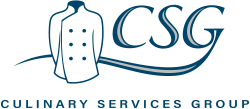Food & Nutrition F-Tags
Food & Nutrition F-Tags Found in the CMS Survey
F800 Provided Diet Meets the Needs of Each Resident
The facility must provide each resident with a nourishing, palatable, well-balanced diet that meets his or her daily nutritional and special dietary needs, taking into consideration the preferences of each resident.
For this tag auditors will look for:
- Ensure a resident’s Plan of Care has specific requirements for a resident’s diet
- Residents are provided alternate meals
- Alternate meals meet the nutritional requirements for the resident
- Documentation in the meal plan reflects what the resident is given at each meal
- Residents are served correct portion sizes to meet their nutritional plan
- Dietary staff are following a recipe
- Food is prepared, served, and plated in an appetizing manner
- Food is served at proper temperatures
- The facility takes into consideration resident’s concerns about food frequency, quality, variety, and timeliness.
F801 Qualified Dietary Staff
This includes a qualified dietitian or clinically qualified nutrition professional.
Requirements for qualification include:
- Bachelor’s degree or higher from an accredited US college/university with completion of the academic requirements for a program in nutrition or dietetics
- Completion of a minimum of 900 hours of supervised dietetics practice under the supervision of a registered dietitian or nutrition professional
- Licensed or certified as a dietitian or nutrition professional in the State where services are being performed.
If the qualified person is not a full-time staff member (35+ hours/week), the facility must designate someone to serve as the Director of Food and Nutrition Services and that individual must:
- Be a certified dietary manager, certified food service manager or has a similar national certification from a national certifying body for food service management and safety
- Associate’s degree or higher in food service management or in hospitality, if the course study from an accredited institution includes food service or restaurant management
- Meets State requirements for food service managers or dietary managers in States that have such established requirements
- Receives “frequently scheduled consultations” from a qualified dietitian/ nutritional professional
F802 Sufficient Dietary Support Personnel
“Sufficient support personnel” means having enough dietary and food and nutrition staff to safely carry out all of the functions of the food and nutrition services.
For this tag auditors will look for:
- Is there enough support personnel to safely and effectively carry out the meal preparation and other food and nutrition services
- Interview residents to determine if their needs and preferences are met
- Is the food is palatable, attractive, served at the proper temperatures and at appropriate times
- Which individual represents food and nutrition services at interdisciplinary team meetings
F803 Menus Meet Resident Needs & Are Prepared In Advance
Menus must:
- meet the needs of residents in accordance with established national guidelines
- be prepared in advance
- be followed
- reflect, based on a facility’s reasonable efforts, the religious, cultural and ethnic needs of the resident population, as well as input received from residents and resident groups.
- be updated periodically
- Be reviewed by the facility’s dietitian or other clinically qualified nutrition professional for nutritional adequacy
- Nothing in this paragraph should be construed to limit the resident’s right to make personal dietary choices
For this tag auditors will look for:
- The facility has enough inventory on hand for 3+ days
- Food is the correct texture according to the resident’s diet
- Resident preferences are kept up to date
- There are a variety of food options available
- Substituted items are approved and logged
During the audit you should have the following documentation available:
- Prep & Pull sheets
- Substitution logs
- Menu change communication
- Menu posting
- Resident feedback via committee meetings or tray cards
F804 Nutritive Value, Palatable Appearance, and Preferred Temperature
For this tag auditors will:
- Ask residents how they feel about the food.
- Request a test tray
- Ask for recipes
- Ask how food is seasoned
- Make sure you have all ingredients available to make recipes as instructed for palatability
- Request tray delivery logs
- Ask for a temperature log and check to ensure acceptable serving temperatures are monitored and corrected
- Ask for resident feedback, comments, and compliant documentation
F805 Food Offered in a Form to Meet Individual Needs
For this tag auditors will:
- Observe meals and food preparation to assure the food is prepared and appropriate to meet resident’s needs and according to their assessment and care plan.
- Observe residents and assess if residents are having difficulty chewing or swallowing their food
- Assess if food cut, chopped, ground, or pureed for individual resident’s needs
- Observe that modified textures are prepared in a safe and sanitary manner
- Observe that modified textures are prepared in a way that preserves nutrient quality
- Observe that textures prepared to a standard quality or measure
Check your compliance by:
- Performing a test tray on a modified textures
- Having diet and texture spreads posted for staff to reference, including facility-specific guidelines
- Ensuring your purees do not spread on a plate
- Making sure the food thickener is labeled and stored without utensils in it and there are directions for mixing nearby.
F806 Resident Allergies, Preferences, and Substitutes
For this tag auditors will:
- Ask residents how the food meets their preferences, allergies and/or intolerances
- If residents refuse food or drinks, ask them if they are offered substitutes
- Interview residents or staff to determine how alternate food choices are communicated to the residents
- Assess how food textures, allergies, intolerances, and preferences are accommodated per a resident’s assessment, care plan, and choice and how is this information communicated to staff
Check your compliance by:
- Doing tray accuracy audits
- Regularly updating preference records
- Conducting meal rounds
- Having an Always Available menu
- Attending care plans, morning meetings, QAPIs
- Providing resident specific menus to residents and their care team
F807 Drinks Are Available to Meet Resident Hydration Needs and Preferences
For this tag auditors will:
- Observe that drinks and other fluids provided when the resident requests that are consistent with the resident’s care plan, preferences and choices
- Observe that facility staff provide sufficient drinks that the resident prefers to maintain hydration
- Observe that other liquids, such as broth, popsicles, or ice cream, offered to the resident to encourage fluid intake
- Observe what actions facility staff take to ensure resident hydration is maintained if a resident refuses the fluid offered
Check your compliance by:
- Doing tray accuracy audits
- Updating preference records
- Attending care plans, morning meetings, and QAPIs
- Working with the IDCT
- Having always available menus with a special request policy
F808 Therapeutic Diets Prescribed By Physicians
A therapeutic diet is a special diet ordered by a physician to:
- Treat a disease or clinical condition
- Eliminate or decrease specific nutrients in a resident’s diet
- Increase levels of a specific nutrient in a resident’s diet
- Provide food in a form that a resident is able to eat, such as a mechanically altered diet
Mechanically altered diets are diets where the texture of the food has been altered based on the specific physician’s order.
F809 Frequency of Meals and Snacks at Bedtime
There must be no more than 14 hours between a substantial evening meal and breakfast the following day, except when a nourishing snack is served at bedtime, up to 16 hours may elapse between a substantial evening meal and breakfast the following day if a resident group agrees to this meal span.
Suitable, nourishing alternative meals and snacks must be provided to residents who want to eat at non-traditional times or outside of scheduled meal service times, consistent with the resident plan of care.
Definitions:
Nourishing Snack: Items from the basic food groups either singular or in combination with each other.
The snack needs to provide a balance of nutrition, it has to have a calorific value that is consistent with their diet. It also has to have the protein, vitamins, and minerals to promote good health
Suitable and nourishing alternative meals and snacks: This means the client must have the option of a different meal or snack that is equivalent in value for their current mean care plan
If the offered option for the day is not something the client wants to eat, an alternative item must be provided to fit their nutritional needs, It is our responsibility to have these options available at each serving period
For this tag auditors will:
- Observe meal times and schedules and determine if they are offered at regular times comparable to normal times found in the community
- Interview residents to get their input on meal service schedules and determine if they meet their choices and gain their input regarding eating at non-traditional times and the availability of snacks throughout the day.
Check your compliance by::
- Completing truck delivery logs to document snack & nourishment delivery
- Ensure your staff knows about time requirements
- Alert the right person if a meal is going to be late
- Understand if your meals and snacks have a buffer
F810 Assistive Devices - Eating Equipment and Utensils
For this tag auditors will:
- Determine if recommendations were made for adaptive eating equipment and utensils. If they were, determine if these utensils are available and able to be utilized by residents
- Determine if these utensils are recommended but not used if that is by the resident’s choice.
- Observe if eating equipment and utensils are not being utilized and then determine when these were recommended and how their use is being monitored by the facility and if the staff is developing alternative recommendations and monitoring ongoing assessments
- Observe whether staff competently assists residents who use assistive devices
F811 Feeding Assistant Training, Supervision, and Residents
Requirements for training of paid feeding assistants include these minimum requirements:
- A State-approved training course for paid feeding assistants must include, at a minimum, 8 hours of training in the following:
-
Feeding techniques
-
Assistance with feeding and hydration
-
Communication and interpersonal skills
-
Appropriate responses to resident behavior
-
Safety and emergency procedures, including the Heimlich maneuver
-
Infection control
-
Resident rights
-
Recognizing changes in residents that are inconsistent with their normal behavior and the importance of reporting those changes to the supervisory nurse.
-
- A facility must maintain a record of all individuals, used by the facility as feeding assistants, who have successfully completed the training course for paid feeding assistants.
F812 Food Procurement, Storage, Preparation, and Sanitary Serving
This provision does not prohibit or prevent facilities from using produce grown in facility gardens, subject to compliance with applicable safe growing and food-handling practices.
This provision does not preclude residents from consuming foods not procured by the facility.
The facility must store, prepare, distribute and serve food in accordance with professional standards for food service safety.
Important Definitions:
- Critical control point: This a specific point in the food production chain that should be monitored to prevent physical, biological, or chemical contamination
- Cross contamination: The transfer of harmful substances between two surfaces, this can be physical or biological
- Danger zone: A temperature zone of 41F to 145F that, when food is left in, will promote rapid bacteria growth
- Dry storage: An area used to store non-refrigerated foods and supplies that can stay in ambient temperatures
- Food contamination: The unintended presence of potentially harmful substances, these can be physical, chemical, or biological
- Food preparation: A series of processes to prepare foods from receiving to serving
- Food service distribution: Process of getting the prepared plated food to the resident from the kitchen
- Potentially hazardous foods: Food that requires time and/or temperature control to maintain the safety
- Storage: The retention of food that is held before and after the production process
For this tag auditors will look for:
- Labeling, dating, and monitoring of refrigerated food, including, but not limited to leftovers, so it is used by its use-by date, or frozen (where applicable), or discarded
- The completion of Test Tray Audits to ensure foods are being served at correct temperatures
- The separation of raw foods (e.g., beef, fish, lamb, pork, and poultry) from each other and storing raw meats on shelves below fruits, vegetables or other ready-to-eat foods so that meat juices do not drip onto these foods.
- Food is cooked to the appropriate temperature to kill pathogenic microorganisms that may cause food borne illness. Cold food is kept in a manner that prevents the growth of pathogenic microorganisms.
-
- Poultry and stuffed foods, i.e., turkeys, pork chops, chickens, etc. – 165 degrees F
- Ground meat (e.g., ground beef, ground pork), ground fish, and eggs held for service – at least 155 degrees F
- Fish and other non-ground meats – 145 degrees F
- NOTE: Fresh, frozen, or canned fruits and vegetables that are cooked do not require the same level of microorganism destruction as raw meats/foods. Cooking to a hot holding temperature (135 degrees F) prevents the growth of pathogenic bacteria that may be present in or on these foods
- Employees utilize proper personal hygiene practices to prevent food contamination. Including include proper handwashing, use of hairnets and disposable gloves
- Use and maintain equipment and food contact surfaces (cutting boards, plates, utensils, etc) to prevent cross-contamination
- Equipment and Utensil Cleaning and Sanitization -A potential cause of foodborne outbreaks is improper cleaning (washing and sanitizing) of equipment and protecting equipment from contamination via splash, dust, grease, etc.
- Cleaning Fixed Equipment -the removable parts must be washed and sanitized and non-removable parts cleaned with detergent and hot water, rinsed, air-dried and sprayed with a sanitizing solution.
F813 Personal Food Policy
For this tag auditors will look for:
- The facility has a policy regarding the use and storage of foods brought in from outside sources
- Staff assists the resident in accessing and consuming the food if the resident is not able to do
so on his or her own - Staff uses safe food handling practices
- Food brought in by family or visitors is stored in a way that is either separate or easily distinguished from
nursing home food - Family and visitors are helped to understand safe food handling practices (such as safe cooling/ reheating
process, hot/cold holding temperatures, preventing cross-contamination, hand hygiene, etc.)
F814 Proper Disposal of Garbage and Refuse
For this tag auditors will look for:
- Garbage and refuse containers in good condition (no leaks) and is waste properly contained in dumpsters or compactors with lids or otherwise covered
- Areas such as loading docks, hallways, and elevators used for both garbage disposal and clean food transport kept clean, free of debris, and free of foul odors and waste fat
- The garbage storage area is maintained in a sanitary condition to prevent the harborage and feeding of pests
- Garbage receptacles covered when being removed from the kitchen area to the dumpster
Resources: F-Tags & Food Safety
How to Stay Survey-Ready by Mastering Culinary Compliance Standards
by Culinary Services Group | Jul 12, 2023
Every year, the Center for Medicare and Medicaid Services (CMS) surveys long-term care communities that accept payment from their department. These assessments can last up to five days and are an in-depth look at how well you manage the CMS standards and regulations....
Food Safety in Senior Living: F-Tag Compliance
by Culinary Services Group | Dec 7, 2022
Do you own, operate, or work at a senior living community? If so, part of your job undoubtedly involves staying up-to-date on F-tags. These are guidelines monitored by the Centers for Medicare and Medicaid Services in your state to ensure your “facility staff support...
How to Accommodate Residents Following Kosher or Halal Diets
by Culinary Services Group | Apr 20, 2022
Your senior living community most likely has a diverse resident population with different dietary needs and preferences. While some residents can and will eat anything you serve, other residents may follow a special diet due to medical conditions or religious beliefs....
How to Stay Inspection-Ready: An Interview With A Food Safety Specialist
by Culinary Services Group | Dec 15, 2021
December is Worldwide Food Service Safety Month, meaning this is the perfect time for food service providers to take a closer look at how they’re preparing and serving food to diners. This is also an excellent time for healthcare providers to reevaluate food safety...
Managing Dysphagia in Long-Term Care
by Culinary Services Group | Sep 8, 2021
Dysphagia affects about 50% of long-term care patients and can lead to an increased risk of dehydration and malnutrition. So, what is Dysphagia? The Centers for Medicare & Medicaid Services (CMS) defines Dysphagia as “a swallowing disorder that may be due to...
Food Safety 101: Creating Allergy Friendly Menus at Your Senior Living Community
by Culinary Services Group | Jul 7, 2021
About 10.8% of adults in the United States have food allergies, which means it’s likely that some residents in your healthcare community have a food allergy or intolerance. Ensuring that your dining program can accommodate these residents is essential. The Centers...
Food Safety 101: Are Your Residents Eating Enough During the Day?
by Culinary Services Group | May 12, 2021
Welcome back to our F-tag food safety series. In previous installments of this series, we’ve discussed how to prepare your kitchen for inspections, how to ensure menus meet resident needs, how to create meals that match resident assessment plans, and more. In this...
Food Safety 101: Serving Meals that Match Resident Assessment Plans
by Culinary Services Group | Feb 10, 2021
It’s time for another installment of our F-tag food safety series. This week we’ll be discussing tag F-805. This tag is about serving meals that meet residents’ needs according to their assessed ability to chew and swallow foods. More specifically, this tag focuses on...
Food Safety 101: Preparing Food That is Palatable, Attractive, and Safe
by Culinary Services Group | Jan 13, 2021
In this next installment of our F-Tag food safety series, we’re going to discuss tag F-804. This tag is all about how the food is prepared, held after preparation, plated, presented, and kept at safe and appetizing temperatures. It states that: Food must be prepared...
Food Safety 101: How to Ensure Your Menus Meet Resident Needs
by Culinary Services Group | Dec 9, 2020
In this next installment of our F-Tag food safety series, we’re going to dive into tag F-803. This tag focuses on menus and nutritional adequacy. It states that menus at your senior living community must: Meet the nutritional needs of residents in accordance with...
Food Safety 101: How to Prepare Your Kitchen for an Inspection
by Culinary Services Group | Nov 11, 2020
Last month, we wrote a blog post detailing everything that food inspectors are looking for when they come to inspect the kitchens at your senior living community. The inspector is responsible for making sure that your team is complying with the 15 Food and Nutrition...
Food Safety 101: What Food Inspectors Are Looking For in Your Kitchen
by Culinary Services Group | Oct 14, 2020
If you work in or operate a senior living community, you most likely know how important F-Tags are. F-Tags refer to areas of compliance assessed during a CMS Survey. F-Tags are used by your state and the Centers for Medicare and Medicaid Services to ensure that your...




















Understanding Food & Nutrition F-Tags
What is an F-Tag?
F-Tags refer to areas of compliance assessed during a Centers for Medicare and Medicaid Services or CMS Survey. F-Tags are used by your state and CMS to identify deficiencies based on a community’s performance within CMS standards and guidelines. Each tag is related to one area of the Code of Federal Regulations. All of these tags come directly from the regulations outlined in 42 CFR Part 483.60. In total, there are 209 F-Tags outlined in the State Operations Manual for Long Term Care Communities published by CMS.
Since CMS certification is required to receive Medicare and Medicaid payments, senior living and long-term care communities are inspected by the Department of Health & Human Services in their state. Surveys occur annually and may be triggered by a complaint. State officials do not need to give prior warning to their arrival. Surveys can last 3-5 days depending on facility size. Follow-up surveys, reporting, or assessments may be required after the initial survey is completed. A poor survey can result in significant penalties, stopped payments, and forced action.
It’s important that your foodservice company and dining team have a good understanding of all nutrition and dining-related F-tags and how to avoid them.
View the complete guide of F-tags related to kitchen and dining in your community.